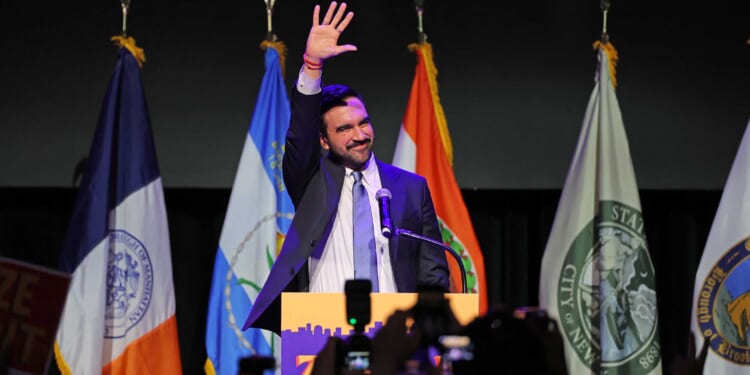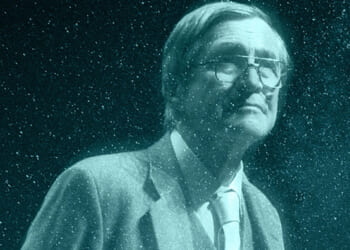
Zohran Mamdani’s victory on Tuesday means that in less than two months, he will be installed as New York City’s 110th mayor. It also means that he has exited campaign mode, where promises are made, and is entering the domain of executive administration, where those promises are tested. Many New Yorkers will now wonder: What can the mayor actually do?
New York City’s mayor is effectively the most senior middle manager in America. He oversees hundreds of thousands of employees, but he can be checked by state and federal authorities or hemmed in by lateral competitors like the city council. His real powers are administrative and managerial: hiring, firing, and directing the bureaucracy that keeps the city running and directs trash pickup, police, firefighting, roads, and other services.
Finally, a reason to check your email.
Sign up for our free newsletter today.
Expanding beyond those limits takes political skill and creative leverage. To understand a mayor’s prospects, keep two questions in mind: Who will he choose for his team? And how will he navigate the ocean of legal and political forces beyond City Hall?
The mayor’s first and most important decisions involve whom he hires to help run city services. These decisions quickly affect both “front of house” results (for example, the amount of trash on your street) and “back of house” processes (simplifying city contract-approval timelines).
For instance, one of Mayor Eric Adams’s great hires was Jessica Tisch, who originally joined his administration as commissioner of the Department of Sanitation. Under her management—and thanks in part to Adams’s refusal to micromanage or countermand her work—the city has rolled out the new Empire Bins and accelerated trash containerization.
One of Adams’s less successful hires, by contrast, was Department of Transportation commissioner Ydanis Rodríguez, who has not protected his agency from mayoral micromanagement and distraction. The result has been a confused, wasteful, and possibly illegal set of streetscape changes. Adams began his mayoralty with an unexplained flip-flop on whether to keep the Open Street on Willoughby Avenue in Brooklyn. He surprisingly removed the newly installed Bedford Avenue protected bike lane. And there’s probably enough material to fill a book on the corruption-filled redesigns of McGuinness Boulevard. Rodríguez and the DOT have simply absorbed this inconstancy.
Mayoral hires and management also matter for the internal machinery of government. Again, the outgoing Adams administration provides illustrative examples, particularly in his choice of deputy mayors.
Adams’s initial appointment of Lorraine Grillo as first deputy mayor enabled a slew of under-the-radar good-government reforms, such as eliminating unnecessary Financial Control Board review of capital contracts. His subsequent appointment of Maria Torres-Springer for the same role facilitated the administrative and political delivery of his “City of Yes” zoning reform. This marked a generational shift in favor of growth and development and will probably be the Adams administration’s defining achievement.
Getting big things done as a mayor means hiring competent people and managing them well. But outside the day-to-day administrative realm, New York City mayors face formidable obstacles. For example, the mayor has the power to write the first draft of the city budget, which the city council has limited power to amend. But he cannot simply spend as much as he wants.
First, the budget must be balanced. Spending must match anticipated revenues from taxes, fees, and transfers from the state and federal government. Second, the state imposes stringent financial controls on the city budget dating back to the 1975 fiscal crisis. If the budget deteriorates to a certain point, it will once again fall under the authority of the state’s Financial Control Board.
Further, the city council alone can adjust property taxes to balance the budget, and the state legislature can approve or deny the mayor’s desired tax or spending increases. The mayor’s dependency is symbolized in the annual tradition of “tin cup day,” where he goes to Albany to advocate before a joint legislative committee for the inclusion of city priorities in the state budget. Though the mayor is the city’s “chief executive,” he must beg the state legislature for any funding the city can’t generate on its own.
Still, the city’s fiscal health hinges on mayoral action. His allocation of funds in the draft budget determines both the quality of services and whether the city has a robust reserve account for emergencies or political contingencies like federal funding cuts. Few components of governance show the deep, albeit negotiated, authority of the mayor better than the budget.
Mayoral opportunities are balanced by limitations as well when it comes to changing city law. On paper, the mayor has the authority to veto city council legislation, subject to an override of two-thirds of the council. In practice, the mayoral veto almost always gets overridden. The political realities that dictate the council’s composition effectively nullify this mayoral power.
But the mayor is not totally helpless. He can unilaterally appoint a charter revision commission, which can draft changes to the city charter. New Yorkers must approve those changes, but the mayor has some ability to influence fundamental city law.
In the end, the mayor’s practical powers emerge from his ability to hire and manage his team, his political skill for negotiating within the political system, and his capacity to anticipate and respond to contingencies creatively. Whether he does these things poorly or well is up to him.
Photo by ANGELA WEISS/AFP via Getty Images
City Journal is a publication of the Manhattan Institute for Policy Research (MI), a leading free-market think tank. Are you interested in supporting the magazine? As a 501(c)(3) nonprofit, donations in support of MI and City Journal are fully tax-deductible as provided by law (EIN #13-2912529).
Source link


















